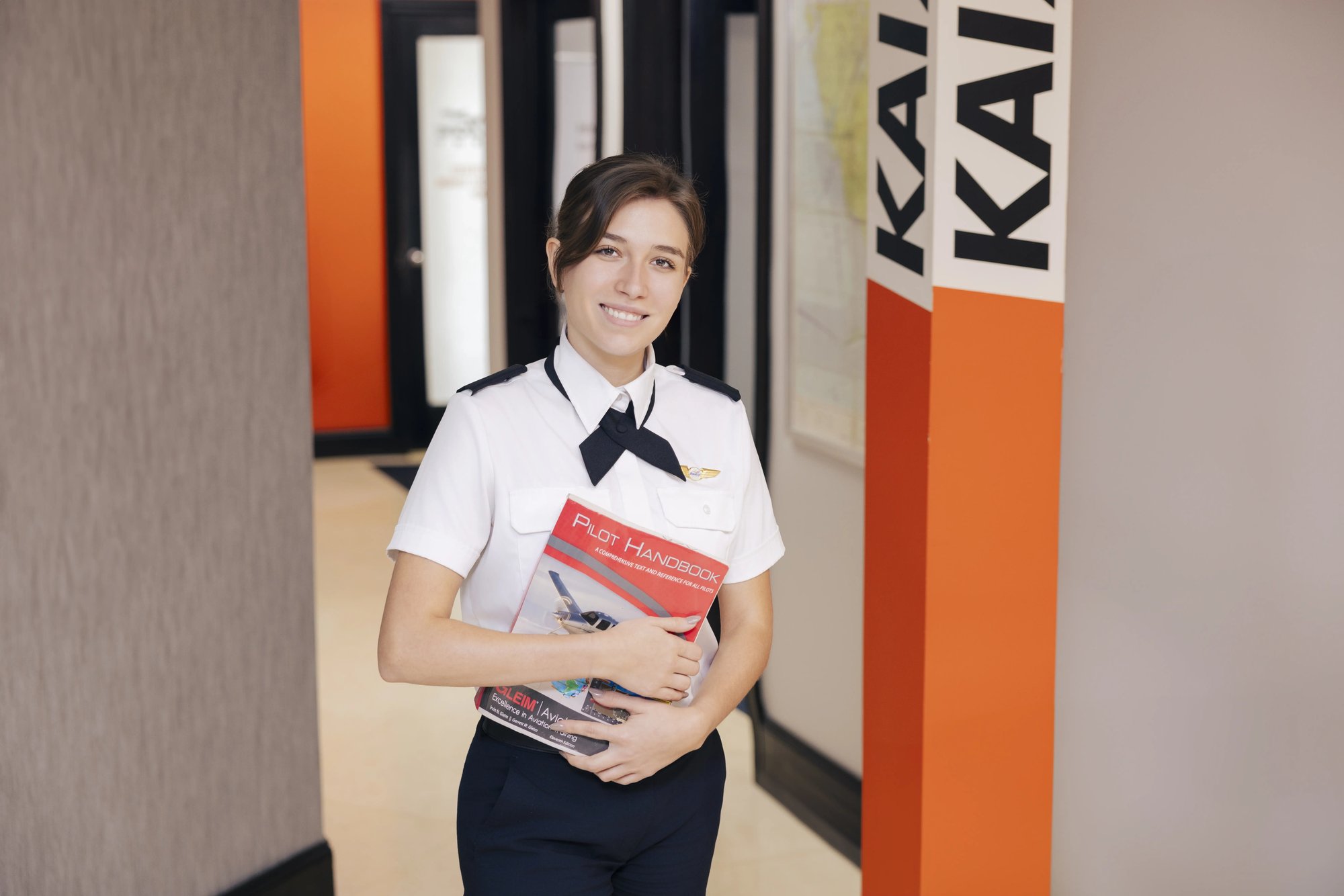Study Smarter, Fly Better: Effective Pilot Study Strategies for Lasting Success
In aviation, studying isn’t just a formality, it’s your foundation for safety, confidence, and long-term growth as a pilot. Every time you take off, your ability to understand regulations, interpret weather, manage systems, and respond to emergencies is put to the test. The way you study determines whether you simply pass an exam or become a competent, reliable, and resourceful pilot.
At Aviator Zone Academy, we believe that great pilots are shaped by discipline, curiosity, and a commitment to learning that goes far beyond written tests. Whether you’re preparing for your Private Pilot License (PPL), Instrument Rating (IR), or Commercial Pilot License (CPL), these proven study techniques will help you stay sharp, motivated, and ready.
1. Choose High-Quality Study MaterialsStart with the right tools. Using FAA-approved, up-to-date resources ensures that your knowledge aligns with the real standards of the industry. Recommended providers like Gleim, Sporty’s, and ASA offer well-structured courses, detailed textbooks, and digital learning systems that cover everything from basic aerodynamics to instrument procedures.
Tip: Don’t rely on outdated or generic materials. Look for versions labeled for the current FAA testing year.
2. Master the ACS from Day OneThe Airman Certification Standards (ACS) isn’t just a checklist it’s the core blueprint of your training and evaluation. It outlines exactly what you'll be tested on during the knowledge exam, oral exam, and checkride.
Study strategy:
- Read through the ACS thoroughly.
- Highlight key tasks and knowledge areas.
- Use it to track your personal progress.
- Ensure your instructor follows the ACS in each lesson.
If it’s listed in the ACS, it can (and likely will) be evaluated during your checkride.
3. Organize Your Study in Logical StepsStructure your learning from basic to advanced concepts to build a solid knowledge foundation.
Suggested sequence:
- Federal Aviation Regulations (FARs).
- Aerodynamics and flight principles.
- Meteorology and weather products.
- Navigation and airspace.
- Aircraft systems and performance.
- Flight planning and weight & balance.
- Emergency procedures and ADM (Aeronautical Decision-Making).
This layered approach helps improve long-term retention and reduces the feeling of overwhelm.
4. Use Mind Maps for Deeper UnderstandingMind maps are a visual way of organizing complex topics by breaking them into clear, interconnected parts. They are especially useful for:
- Understanding how weather systems affect flight
- Mapping out emergency procedures
- Connecting airspace classifications with rules and entry requirements
- Visualizing relationships between aircraft systems
By creating your own mind maps, you engage multiple parts of your brain enhancing both comprehension and memory. Tools like XMind, Miro, or even a whiteboard and markers work great.
5. Use Flashcards and Digital AppsFlashcards remain one of the most efficient ways to memorize definitions, numbers, and procedures.
Combine traditional index cards with digital apps like Quizlet or Anki, which allow you to:
- Study on your phone or tablet
- Use spaced repetition (proven to improve recall)
- Track your progress and weak areas
Bonus: Search for decks created by other pilot students to supplement your own.
6. Study with Your CFI or a Study PartnerDon’t study in isolation. Preparing for your oral exam with a Certified Flight Instructor (CFI) or a fellow student boosts understanding, reveals blind spots, and reduces anxiety.
Try:
- Hosting mock oral exams
- Practicing scenario-based questions
- Asking “why” instead of memorizing “what”
This kind of collaborative study mimics real decision-making and makes the learning experience more dynamic.
7. Rehearse Mentally and with SimulatorsUse chair flying to mentally walk through each procedure, such as engine start, taxi, run-up, takeoff, pattern entry, or missed approach. Doing this out loud helps you develop muscle memory and build confidence.
Pair it with simulator time (like in a Redbird LD) to:
- Practice complex approaches
- Rehearse failures
- Strengthen instrument scan techniques
This combo, mental rehearsal and simulation, turns theory into actionable skill.
8. Know Your Aircraft Inside and Out- You should be able to explain:
- The full electrical and fuel system
- Propeller types and engine operations
- V-speeds and their applications
- Weight and balance calculations
- Maintenance requirements and aircraft documents (ARROW, MEL, etc.)
This isn’t just for the checkride, it’s part of being a safe, competent pilot who understands their aircraft deeply.
9. Create and Stick to a Study ScheduleStudying “when you feel like it” leads to stress and gaps in understanding. Instead, plan a consistent schedule with specific topics each day.
Sample weekly breakdown:
- Monday: Regulations + Airspace
- Tuesday: Weather + METARs/TAFs
- Wednesday: Aircraft systems
- Thursday: Flight planning + performance
- Friday: Emergency procedures + chair flying
- Saturday: Review + simulator
- Sunday: Rest or quiz yourself
Use apps like Notion or Google Calendar to set reminders and track completion.
10. Schedule a Full Mock CheckrideYour final prep should be a complete mock checkride with your instructor. Dress professionally, bring all required documents, and take it seriously.
This practice run allows you to:
- Experience checkride pressure in a safe environment
- Identify final gaps in knowledge or skills
- Boost your confidence before the real exam
Final Thoughts: Study to Understand, Not Just to Pass
At Aviator Zone Academy, we don’t just prepare you to pass a test, we prepare you to think, decide, and lead as a professional pilot. Aviation is a lifelong learning journey. The more intentional and methodical your studying is, the stronger and safer you’ll be in the cockpit.
Success starts long before you enter the aircraft, it begins with how you study on the ground.


.png?width=178&height=50&name=Aviator%20Zone%20Academy%20(5).png)
Submit a Comment